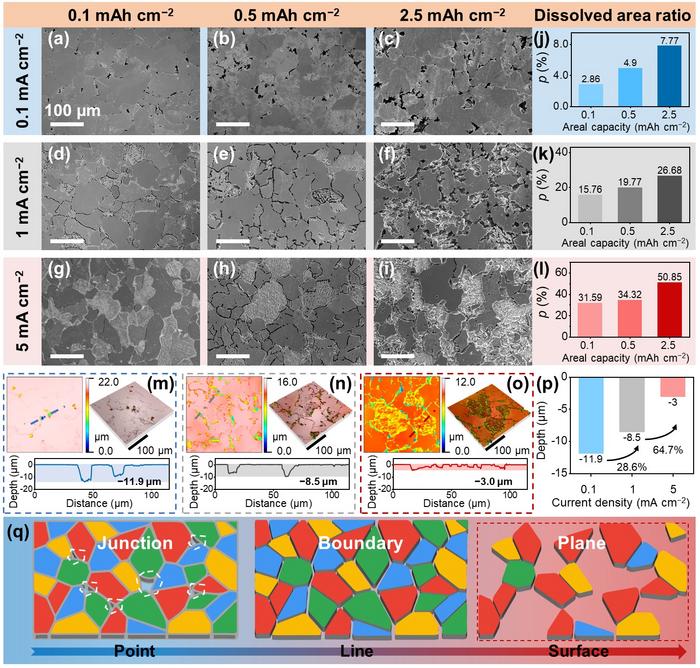The advent of aqueous zinc-based batteries (AZBs) marks a significant advancement in the field of energy storage technology, particularly for grid-scale applications. This innovation is poised to impact the renewable energy landscape due to the inherent advantages AZBs offer, from a safety perspective to their ecological footprint. Unlike traditional lithium-ion batteries, AZBs utilize zinc as the anode material, showcasing how this metal’s properties can be harnessed for efficient energy storage.
The pursuit of environmentally friendly and cost-effective energy solutions has prompted researchers to explore alternative battery technologies. AZBs stand out because they do not rely on toxic or rare materials, aligning them with global sustainability goals. Their ability to provide high energy density further strengthens their position in the competitive landscape of energy storage technologies, making them ideal for applications in electric vehicles and grid energy storage.
Critical to the success of AZBs is the behavior of the zinc electrode during the discharging process. Unlike lithium-based systems, which undergo deposition processes during charge and discharge cycles, the zinc electrode in AZBs must first undergo an electrodissolution reaction. This transformation is crucial to understand as it has extensive implications for the longevity and efficiency of the battery. The process dictates how the zinc electrode interacts with the electrolyte and the cathode material, eventually influencing the overall battery performance.
Recent investigations into the electrodissolution mechanisms of zinc electrodes have illuminated the complex nature of this process. During rigorous experimental studies, researchers discovered a significant relationship between current density and the physical transformation of the electrode material. As current density increases, the mode of electrodissolution transitions from a localized phenomenon to a more homogeneous distribution across the electrode surface, exhibiting a fascinating dimensional evolution—from point-like dissolution to line, then expansive surface-level dissolution.
Moreover, advanced characterization techniques such as electron backscatter diffraction (EBSD) have unveiled unexpected insights regarding the zinc crystal planes. This research drew attention to the variations in electrodissolution susceptibility based on the crystallographic orientation of the zinc. The findings indicate a pronounced resistance to dissolution in the (002) plane, whereas the (110) plane shows a higher propensity for degradation. Such insights are pivotal for optimizing the electrode structure to enhance cycle life and performance characteristics of the batteries.
The importance of controlling the electrodissolution process cannot be overstated. Not only does it dictate the efficiency of the energy conversion process, but it also plays a vital role in the formation of unwanted byproducts like "dead zinc," which can severely impair battery performance. This phenomenon arises from the heterogeneous nature of the zinc metal and its interaction with the electrolytic environment.
In light of these findings, researchers have proposed innovative strategies to mitigate the adverse effects associated with electrodissolution. One such approach involves creating zinc electrodes with preferred crystallographic orientations through a process called epitaxial growth. This method has shown promise in creating a more uniform dissolution profile, effectively reducing the likelihood of dendrite formation and enhancing the reversibility of the zinc electrodes.
Addressing these challenges through a thorough understanding of electrodissolution behavior opens new avenues for engineering robust zinc-based batteries. It also underscores the importance of a comprehensive approach that takes into account both the discharge and charge processes to develop practical applications. With further refinement of these techniques, AZBs could see broader adoption and improved performance, thus cementing their place in the future of energy storage technologies.
The significance of this research extends beyond zinc-based batteries. The newfound knowledge about the electrodissolution phenomena can potentially inform the development of other metal-based electrodes, creating a ripple effect throughout the battery technology landscape. As energy demands continue to soar globally, the drive for safe, efficient, and environmentally friendly storage solutions will become increasingly important.
Through rigorous research and experimentation, the scientific community has taken substantial steps toward demystifying the electrodissolution behaviors of zinc electrodes. With a clearer understanding of these mechanisms, there lies a vast potential for enhancing the operational life of AZBs while simultaneously boosting their performance metrics. This marriage of science and application is essential for meeting the demands of tomorrow’s energy landscape.
As we move forward, it is evident that aqueous zinc-based batteries will play a pivotal role in the transition to sustainable energy systems. Their evolution, shaped by an in-depth understanding of material behaviors and innovative engineering solutions, illustrates the power of scientific inquiry in tackling one of the most pressing challenges of our time—energy storage.
With ongoing research and development, the collective goal remains clear: to perfect the design and function of AZBs. This will provide a reliable, scalable, and environmentally responsible energy storage solution that aligns with both current and future energy needs globally. The journey of aqueous zinc-based batteries has only just begun, but the implications could be transformative.
Subject of Research: Electrodissolution behavior in aqueous zinc-based batteries.
Article Title: Insights into Electrodissolution Mechanisms of Aqueous Zinc-Based Batteries.
News Publication Date: October 25, 2023.
Web References: Science Bulletin DOI
References: Science Bulletin, Electrodissolution Studies.
Image Credits: ©Science China Press.
Keywords: Aqueous Zinc-based Batteries, Electrodissolution, Dendrite Growth, Energy Storage, Zinc Electrodes, Crystallography, Sustainability, Battery Technology.




